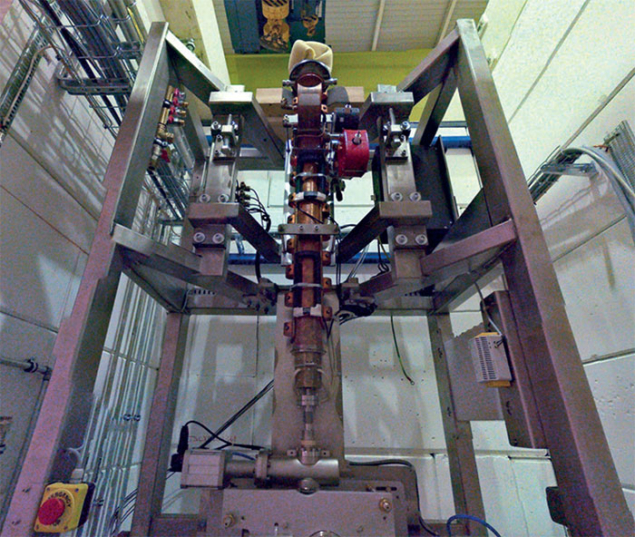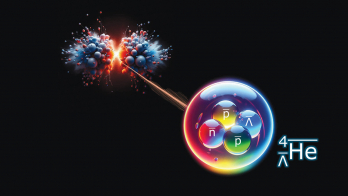
Image credit: M Brice/CERN.
On 1 March, the first component of a new CERN experiment called GBAR (Gravitational Behaviour of Antihydrogen at Rest) was installed: a 1.2 m-long linear accelerator that will be used to generate positrons. Located in the Antiproton Decelerator (AD) hall, GBAR is the first of five experiments that will be connected to the new ELENA deceleration ring and it is specifically designed to measure the effect of gravity on antihydrogen atoms. The experiment will use antiprotons supplied by ELENA and positrons created by the linac to produce antihydrogen ions, which will be slowed almost to a standstill using lasers and then allowed to fall under gravity over a vertical distance of 20 cm.
Although antimatter is not expected to fall “up”, detecting even the tiniest difference between the rate at which matter and antimatter fall would have profound implications for fundamental laws such as Einstein’s equivalence principle. Two further experiments that are based at the AD, AEGIS and ALPHA, are also studying the effect of gravity on antimatter. First results on anti-ion production are expected next year, with gravity studies following later.








